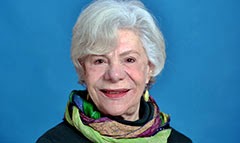A simple, everyday garage sale opens Dale Neal’s new novel, “The Half-Life of Home,” but it’s a garage sale fraught with meaning.
Eva Wilder can’t wait to rid herself of the clutter her family has accumulated over two decades. But when her husband, Royce Wilder, eyes the items for sale, he sees memories, not junk.
This tug between past and present, and the complicated relationship most of us have with change, lies at the heart of Neal’s story.
It’s the second novel for Neal, 54, a reporter for the Asheville Citizen-Times. His first, “Cow Across America,” won the 2009 Novello Literary Award from the Charlotte-Mecklenburg library.
“The Half-Life of Home” (Casperian Books; $15.95) takes place in two fictional N.C. mountain towns, Beaverdam and Altamont. (He borrowed “Altamont” from Thomas Wolfe’s “Look Homeward Angel,” where it stands in for Asheville.)
Neal sets his story in 1992. The Internet and digital technology haven’t yet transformed the world, but middle-aged Royce Wilder feels his once-secure life shifting beneath his feet. Raised in rural Beaverdam, he has moved to Altamont, a town that is becoming populated by transplants, strangers instead of neighbors.
His wife seems distant, his teenaged son, rebellious. And the family is struggling to finance a lifestyle that includes his son’s private-school education.
Pressure to sell family land grows when he learns his hometown emits dangerously high levels of radon gas. There’s even talk that the area could become a radioactive waste dump.
In Beaverdam, meanwhile, a rash of break-ins prompts suspicion that Wanda McRae, a troubled soul known as the Witch Woman, has been making forays into town from her mountain cabin.
Royce discovers the Witch Woman holds a secret about his family. He also learns to move forward.
Though more than a few Southern novels mythologize the past (such as “Gone With the Wind”), one message in this book is about letting the past go.
Neal recalls a great-uncle who said it was a lot easier to start a car engine than hook up a horse. Sometimes, Neal says, progress can be a wonderful thing.
Neal will read twice in Charlotte on May 12 -- at 2 p.m. at Park Road Books, 4139
Park Road, and 4 p.m. at the Wingmaker Arts Collaborative, 207 W.
Worthington Ave, where he’ll be joined by fiction writer Kathryn
Schwille and poet Gail Peck.










